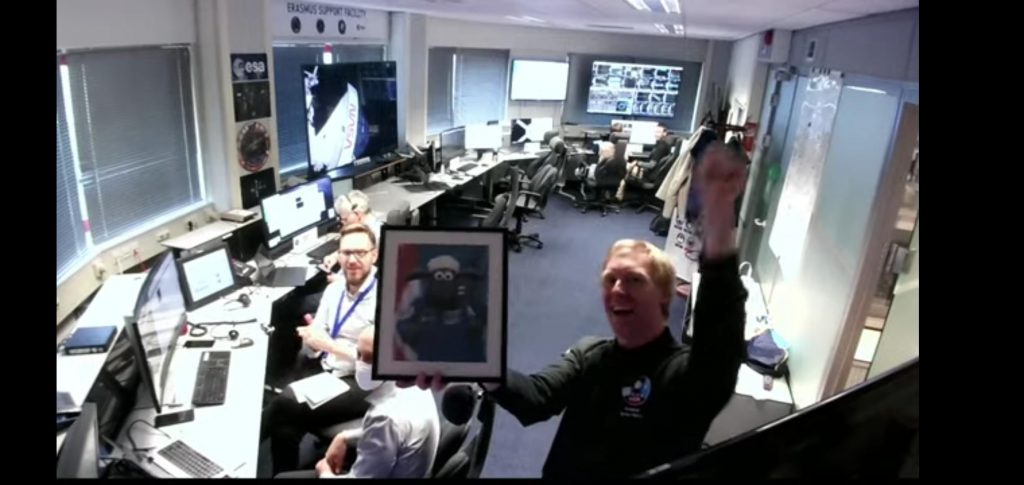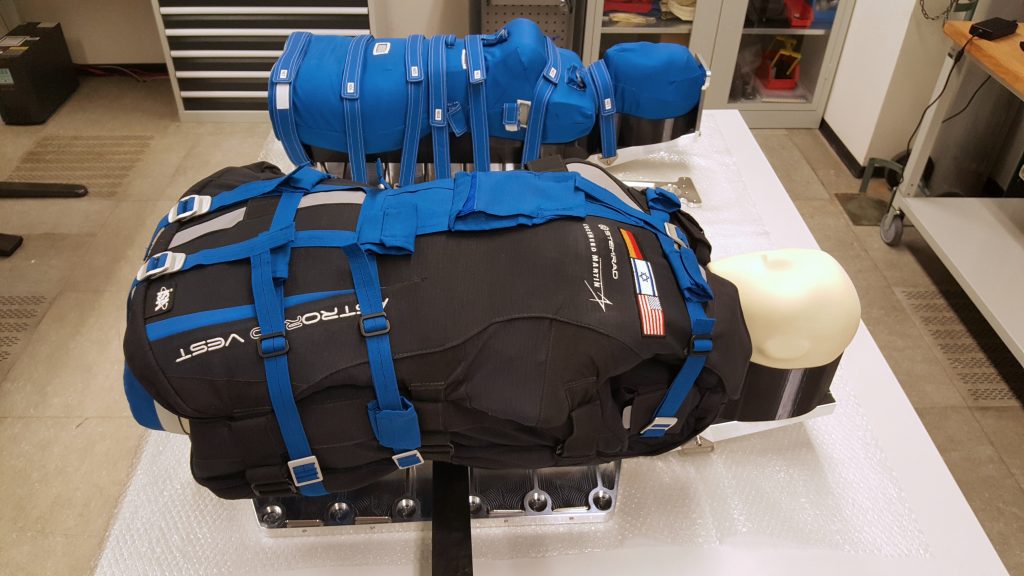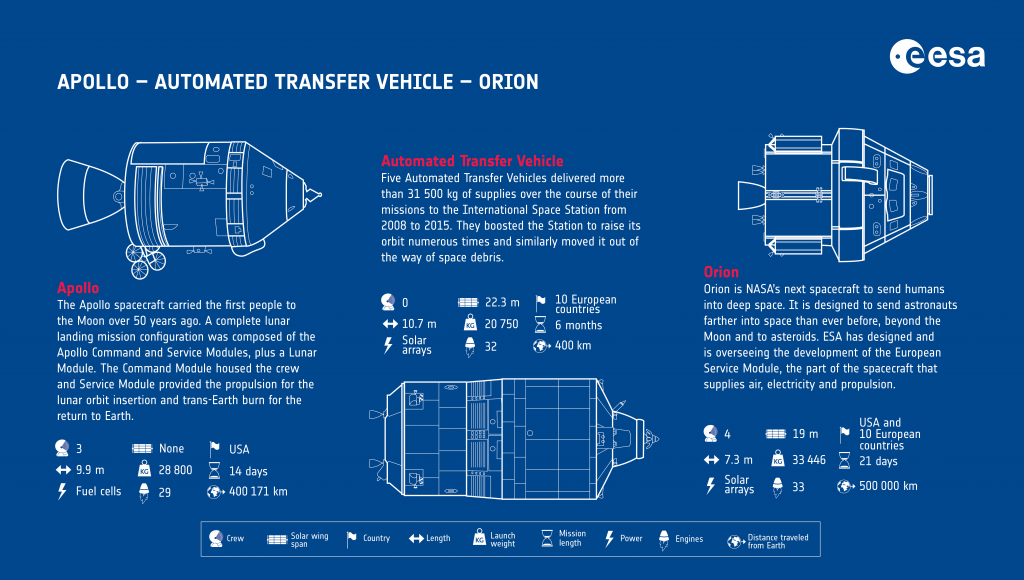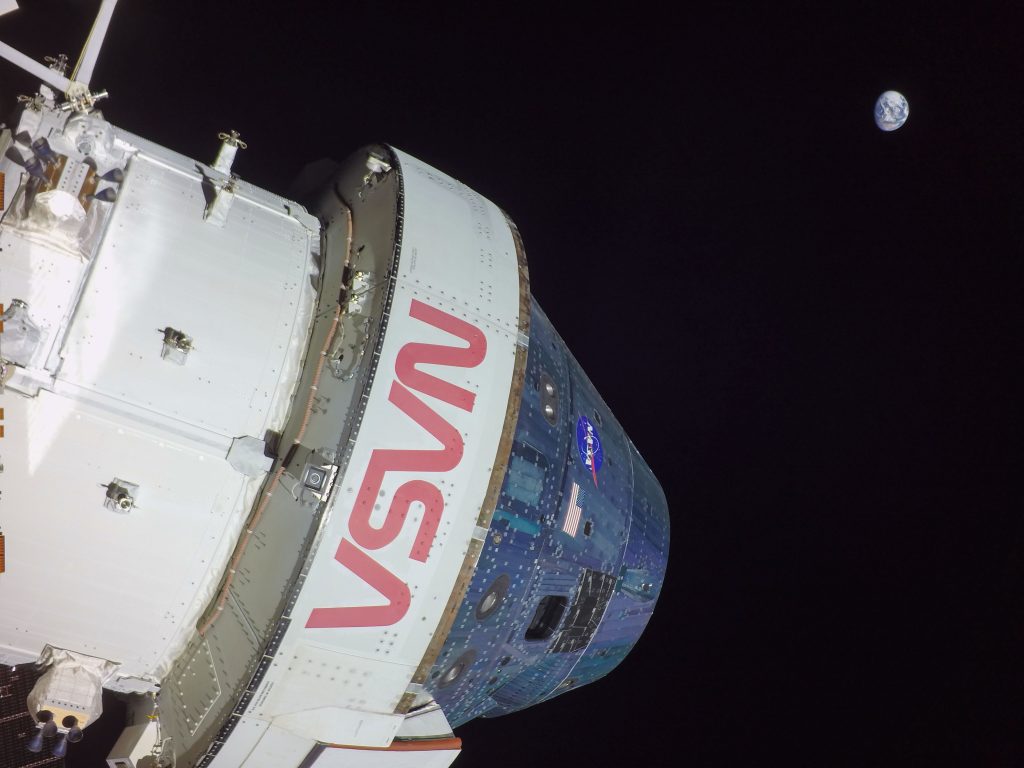Eleven days after liftoff, Orion continues its journey beyond the Moon, now in a distant 12-day retrograde orbit of the Moon where the spacecraft will stay for six days before leaving the orbit to return to Earth.
Orion surpassed the distance record for a mission with a spacecraft designed to carry humans to deep space and back to Earth, at 14:42 CET (13:42 GMT) on 26 November. The record was set during the Apollo 13 mission at 400 171 km from our home planet. At its maximum distance from the Moon, Orion will be more than 434 500 km from Earth on 28 November.

Engineers also completed the first of three orbital maintenance burns by firing auxiliary thrusters on Orion’s service module at 22:52 CET (21:52 GMT) for less than a second to propel the spacecraft at 0.12192 m/s per second. Two more orbital maintenance burns will fine-tune Orion’s trajectory as it continues its orbit around the Moon.
Passengers with a purpose
Flying aboard Orion on the Artemis I mission is a suited manikin named after a key player in bringing Apollo 13 safely back to Earth. Arturo Campos was an electrical engineer who developed a plan to provide the command module with enough electrical power to navigate home safely after an oxygen tank aboard the service module of the Apollo spacecraft ruptured. Commander Moonikin Campos is outfitted with sensors to provide data on what crew members may experience in flight, continuing Campos’ legacy of enabling human exploration in deep space.
Two more mannequins behind Campos, Helga and Zohar, are collecting data on the radiation astronauts will receive on an Artemis mission. These two female phantoms occupy the passenger seats and are fitted with more than 5600 sensors. The pair are measuring the amount of radiation astronauts could be exposed to in future missions with unprecedented precision. The two phantoms simulate adult female torsos. Both Helga and Zohar are made up of 38 slices of tissue-equivalent plastics that mimic the varying density of bones, soft tissue and lungs. Similar dummies are used in hospitals to quantify the right dose of radiation for cancer therapies. The only difference between the twin dummies is that Zohar will be wearing a radiation protection vest, while Helga will travel unprotected from spaceborne radiation.

Artemis builds on the experience of Apollo. With Artemis, humans will return to the lunar surface, and this time to stay. An international endeavour, space agencies will use innovate technologies to explore the Moon’s South Pole and more of the lunar surface than ever before using the Gateway space station in lunar orbit along with advanced spacesuits and rovers. International and commercial partners will establish the first long-term presence on the Moon.

As of 20:16 CET (19:16 GMT) Orion was 405769 km from Earth and 84824 km from the Moon, cruising at 3240 km/h.


 Automated Transfer Vehicle page
Automated Transfer Vehicle page ATV blog archive
ATV blog archive
Discussion: 2 comments
What are Arturos sensor measuring? G forces? Temperature?
Thanks for this blog!
Campos will be equipped with two radiation sensors and have additional sensors under its headrest and behind its seat to record acceleration and vibration data throughout the mission.